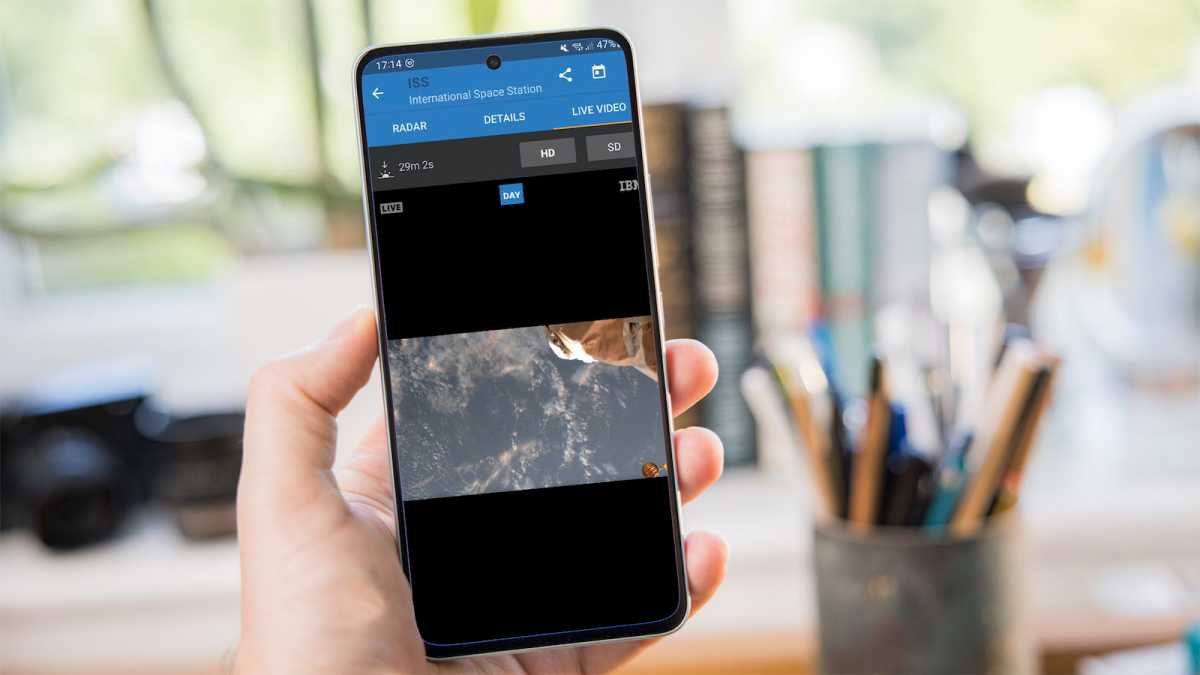If you want to create a magical moment early on Christmas morning – especially if you’ve already been awake for a while with excited little ones – here’s a great idea. At this time of year, the International Space Station (ISS) makes a perfect stand-in for Santa’s sleigh as it passes overhead.
The ISS will pass over the UK twice in the early morning of Christmas Day. If you’re elsewhere in the world, you can use the Explore and Find Sighting Opportunities tool on Nasa’s website to find out when you can see it.
You’ll have to get your timing just right though, as it’ll only be visible for a few minutes at a time. According to the NASA website, the station will pass over London at 4.34am and 6.07am on Christmas morning. Both times will be before sunrise at 8.06am, so you have a good chance of seeing the swiftly-moving light in the sky. And it’s just around the right time for Santa to have finished his deliveries and be heading home to Lapland for breakfast.
We wouldn’t recommend promising your kids anything in case of disappointment. If it’s cloudy, you won’t be able to see it. The ISS can be hard to spot, but at night it’s the third brightest object in the sky, and it looks like a plane, although flying much higher and faster. To give yourself the best chance of seeing it, the apps below will help you to decide on the best time to head outside.
To get pinpoint accuracy, you’ll want to use an ISS tracker app on your phone as this will help you figure out where to look in the sky. The most obvious place to start is to get the NASA app for Apple or Android.
However, there are lots of dedicated apps available, although some have ads or in-app purchases, so look out for that. We’ve found the following apps to be the most accurate and useful.
GoISSWatch
Dominik Tomaszewski / Foundry
The GoISSWatch app for iOS is the best app to track the International Space Station with on iPhone. It’s intuitive and easy to use, and utilises the compass in your iPhone to help you know exactly which way to face to spot the ISS passing over head.
Plus, GoISSWatch can notify you five minutes ahead of each passing so that you don’t miss it.
It isn’t available for Android.
ISS Detector Satellite Tracker

Dominik Tomaszewski / Foundry
The app above is iOS-only, but we’ve also found a great Android ISS tracker called ISS Detector Satellite Tracker. It shows you a countdown to the next ISS pass, which we found to be quite useful, and has a 3D tracking diagram that’s similar to the one used by GoISSWatch, with an elevation gauge that works really well. You’ll also find that it offers weather forecasts so you’ll know whether it’s likely to be visible or not.
You can also see a live feed from the ISS itself, which is incredible.
You can quickly and easily turn on notifications to help make sure that you don’t miss the ISS, too. It does have ads, though, which can be irritating, but it means that you get the app for free (as with the other apps listed here).
Email alerts
If you’d prefer not to use a smartphone to track the ISS, NASA has a dedicated website that lets you sign up for email alerts or text messages when the ISS is going to fly overhead, and also offers some advice about how to spot it in the sky.
NASA notes that the Space Station is the third brightest object in the sky, and it initially looks like a fast-moving plane, until you notice that it doesn’t have any flashing lights. Alternatively, it can initially be mistaken for a very bright star until you spot how fast it’s moving.
The ISS actually passes over the UK every day. In fact, it orbits the Earth 16 times every day, but some of those passes are during daylight and others can be tricky to see depending on the ISS’s orbit pattern. If you miss the ISS on Christmas morning, you can use the same tracking apps to watch it another day.
For more information, check out how to spot the International Space Station.
Read the full article here












